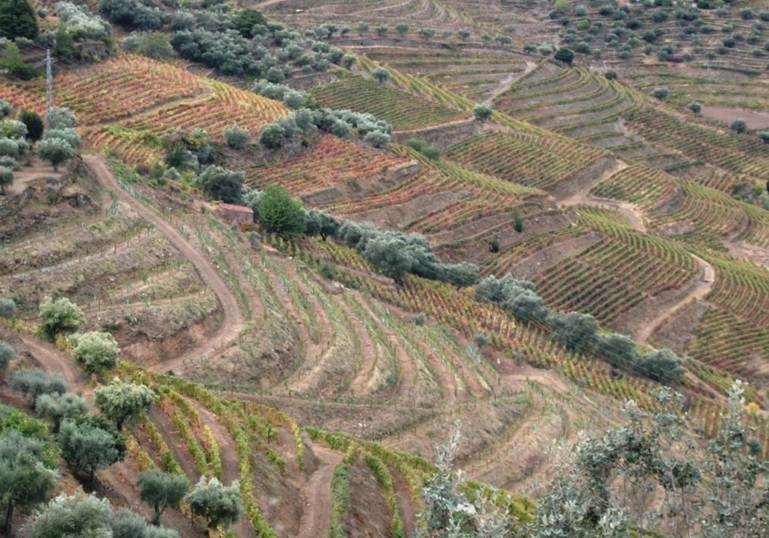Today’s guest post comes from Eline Vanuytrecht from the Department of Earth and Environmental Sciences at KU Leuven, Belgium.
New study explores the impact of climatic change on the suitability of agricultural land in Portugal for wine growing
Wine is big business in Portugal. Viticulture or wine growing and the production of wine represent an important economic activity of the national agricultural sector. World famous are the Port Wine from the Douro Valley, the Vinho Verde from the Minho area, and different qualitative wines from the Alentejo region. The yearly revenue of the wine business is around 700 million euros.
Viticulture, as others sectors of agriculture, is extremely sensitive to local climatic conditions. Both the physiology of the vines and the quality of the wine are affected by several aspects of the local climate. For the Portuguese winemaking sector, it is of great interest to determine viticultural zones that give valuable information about the zone suitability for growing wine. H. Fraga and his colleagues from the Universidade de Trás-os-Montes e Alto Douro in Portugal performed extensive viticultural zoning for the whole country. The researchers identified suitable zones not only for the current situation, but in anticipation of global warming and associated climatic changes also for the future.
The research group determined a combined set of indices that identifies suitable zones for wine growing. The set consists of a humidity index, a thermal index (Huglin index) and a hydrothermal index. The humidity index is an index for the dryness of the soil’s root zone. This is vital because vineyards are vulnerable to prolonged periods of drought. The warmth index combines temperature and solar radiation information to identify suitable zones for wine growing. The hydrothermal index assesses excessive precipitation or humidity. The latter is important to exclude regions were the vulnerability to pests is high. The study results confirmed that, based on the indices, the vast majority of the Portuguese land is suitable for the production of excellent wines.
The image for the future is less bright. In a large part of the country, the suitability for wine growing decreases as a result of projected warmer and dryer climate in Southern Europe. Particularly in the southern and innermost region of Portugal, the thermal index is projected to increase, indicating excessive heats that may harm the vineyards. The humidity index is projected to decrease, as a result of projected extreme periods of drought for which especially South-Eastern Portugal is vulnerable. Even worse is that high impacts are found in the most important wine production regions of the country, thereby hitting the best Portuguese wines. The one redeeming feature is the projected decrease of the hydrothermal index in the future, an indication of the decreased potential damage of vineyards due to pests. Indeed, the drier conditions in the future create more hostile conditions for most pests.
The study of H. Fraga and colleagues highlighted the urgent need to develop good adaptation and mitigation measures for the Portuguese viticulture sector, including new wine varieties, genetic modification or adoption of advanced agricultural practices like irrigation, to cope with the changing climate in the region. It is not unlikely that within the coming decades a reshaping of the viticultural regions in Portugal is necessary and will bring different Portuguese wines on the table.
By Eline Vanuytrecht, KU Leuven

